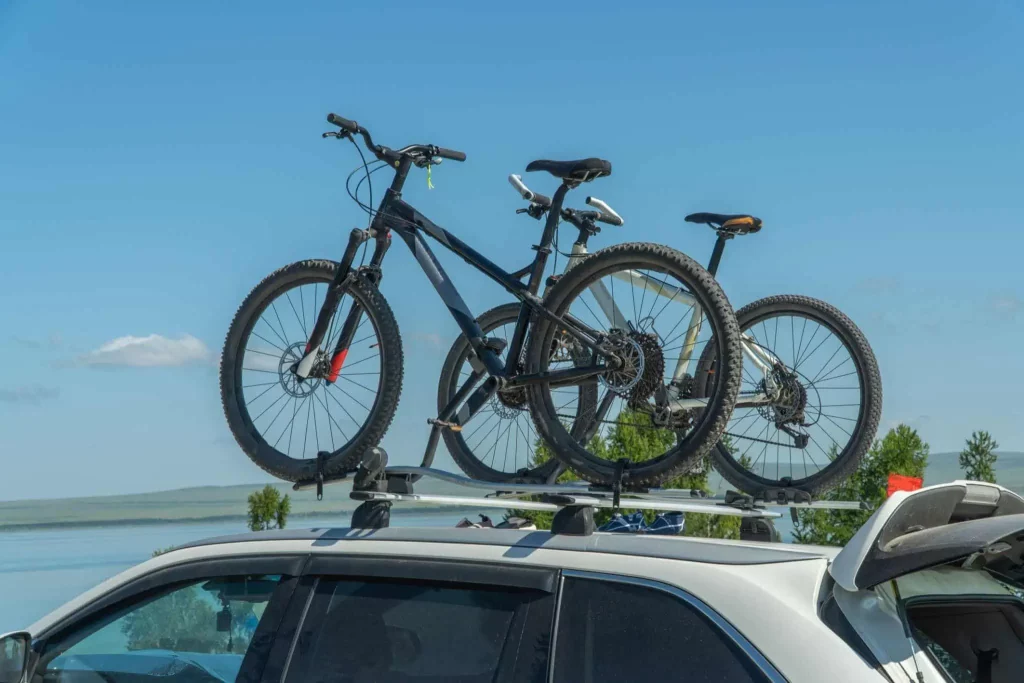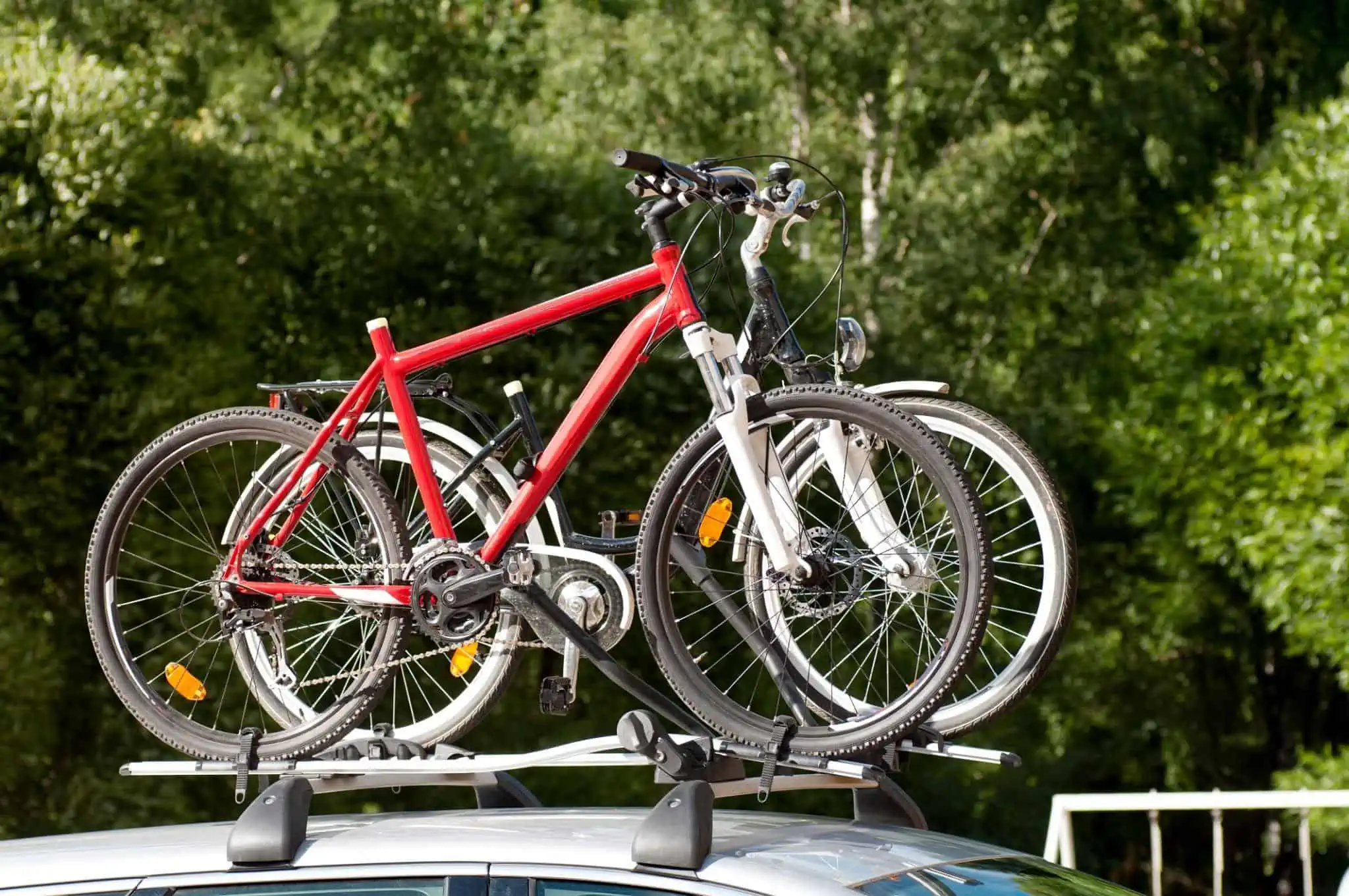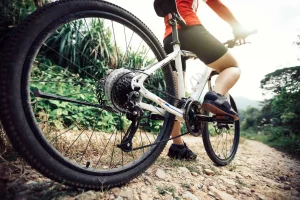Why Transporting Your Bike in a Hatchback Matters Transporting a bike in a hatchback can seem tricky. But whether you’re off to a bike trail, a race, or just need a repair, it’s important to know how to do it right. This guide makes it easy and safe.
Safety Comes First
- Avoiding Accidents: Secure your bike well. It shouldn’t move at all, even if you brake suddenly.
- Protecting Your Car and Bike: You don’t want scratches or damage. We’ll show you how to keep both safe.
The Perks of a Hatchback
- Roomy and Flexible: Hatchbacks have great space, especially with the seats down. Perfect for bikes!
- Easy to Load: They’re lower than SUVs, so lifting your bike in is easier.
Getting Ready
- Clean Your Bike: A dirty bike can mess up your car. We’ll tell you how to clean it first.
- Protect Your Car: Use blankets or tarps to keep your car’s inside clean and scratch-free.
Loading Your Bike Right
- Smart Ways to Load: It’s not just fitting your bike in. We’ll show you the best way to do it.
- Keep It Steady: We’ll cover how to use things like seat belts to keep your bike from moving around.
Why This Guide Is Great
- Expert Advice: We’ve got tips from people who know bikes and cars.
- Clear and Simple: Our steps are easy to follow, no matter how much you know about bikes or cars.
Ready to make your bike trips easier? Let’s dive in! And for more on bike racks for hatchbacks, check out Bike Racks for Hatchbacks at OSPORD.
Preparation and Loading – Getting Your Bike Hatchback-Ready
Transporting your bike in a hatchback doesn’t have to be a puzzle. With the right approach, you can make this process smooth and damage-free. Let’s dive into how you can prepare both your bike and your hatchback for safe transport.
Preparing Your Bike
Before you even open your hatchback, your bike needs some prep. This isn’t just about making it fit; it’s about protecting both the bike and your car.
- Clean Your Bike: Start by giving your bike a good clean. This isn’t just about aesthetics; it’s practical. Removing mud, dirt, or grease means your car stays clean. For tips on cleaning your bike, check out How to Clean a Mountain Bike.
- Remove Accessories: Take off any removable items like water bottles, pumps, or bags. These can get lost or cause damage during transport.
- Check for Loose Parts: Ensure everything is tight and secure. Loose parts can cause damage or get damaged.
Preparing Your Hatchback
Your car needs some attention too. The goal here is to create a safe, scratch-free space for your bike.
- Clear the Space: Remove any items from your hatchback that could obstruct or damage the bike. You want a clear area to work with.
- Fold Down Seats: If your hatchback has foldable rear seats, lay them down. This maximizes the space available.
- Protect the Interior: Lay a blanket or tarp on the floor and up against the back of the front seats. This protects your car from dirt and scratches. For more on car care, visit Bike Racks for Hatchbacks.
Loading the Bike into the Hatchback
Now comes the main event: getting your bike into your hatchback. It’s all about the technique.
- Front Wheel First: Angle the bike so that the front wheel goes in first. This usually makes it easier to maneuver the bike into the car.
- Handlebars and Pedals: Turn the handlebars sideways and fold in or remove the pedals if necessary. This helps in creating more space.
- Secure the Bike: Once inside, ensure the bike won’t move during transport. You can use bungee cords or straps to secure it to the car’s anchor points.
Alternative Loading Methods
Sometimes, the standard method might not work, especially with larger bikes or smaller hatchbacks. Here are some alternatives:
- Remove the Front Wheel: If space is tight, removing the front wheel can make a big difference. Store the wheel elsewhere in the car, like the passenger footwell.
- Use a Bike Rack: If you often transport your bike, consider a bike rack. There are various types, like roof racks or trunk racks. For more on this, explore Allen Bike Rack on a Hatchback.
Safety and Driving Tips
Once your bike is loaded, there are a few more things to keep in mind:
- Drive Carefully: Remember, you have an extra load. Take turns and brake gently to prevent the bike from shifting.
- Regular Checks: If you’re on a long journey, stop occasionally to check that the bike is still secure.
By following these steps, you can ensure that your bike reaches its destination safely, and your hatchback remains in great condition. Remember, the key is in the preparation – a well-prepared bike and car make for an easy loading process.
Alternative Transport Methods and Safety – Expanding Your Bike Transport Options
Transporting a bike in a hatchback is not a one-size-fits-all scenario. Depending on your bike’s size, your hatchback’s dimensions, and your personal preferences, you might need to explore alternative methods. Plus, ensuring safety during transport is paramount. Let’s explore some different ways to transport your bike and how to do it safely.

Alternative Bike Transport Methods
Sometimes, the standard method of putting your bike in the back of your hatchback might not be the best option. Here are some alternatives:
- Bike Racks: Bike racks are a great solution if you transport bikes frequently. They come in various styles, like roof racks, trunk racks, and hitch racks. Each has its pros and cons, so choose one that suits your needs. For a deeper dive into bike racks, check out Bike Racks for Hatchbacks.
- Folding Bikes: If you’re open to a different kind of bike, consider a folding bike. These bikes are designed to be easily transported and can fit in even the smallest hatchbacks. Learn more about folding bikes at Allen Bike Rack on a Hatchback.
- Rear Seat Method: If your bike doesn’t fit in the trunk, you can place it on the rear seats. Cover the seats with a blanket or a bike bag to protect your car’s interior.
Safety During Transport
No matter which method you choose, safety should always be your top priority.
- Secure the Bike: Ensure your bike is firmly secured, whether it’s inside the hatchback or on a rack. Movement during transport can lead to damage.
- Visibility: If you’re using a rear rack, make sure your bike doesn’t block your car’s lights or license plate.
- Check Local Laws: Some areas have specific regulations about transporting bikes on cars. Make sure you’re compliant to avoid fines.
Driving Tips with a Bike in Tow
Driving with a bike in or on your car is different from regular driving. Here are some tips to keep in mind:
- Drive Smoothly: Avoid sudden stops and sharp turns. Smooth driving keeps your bike stable.
- Extra Space: Remember that your car is longer or taller with a bike rack. Be mindful of this when parking or driving under low structures.
- Regular Checks: On long trips, stop periodically to check that your bike is still securely attached.
Maintaining Your Bike Post-Transport
After you’ve reached your destination, there’s still some work to do:
- Inspect Your Bike: Check for any loosening or damage that might have occurred during transport.
- Clean if Necessary: If your bike was on an external rack, it might have gotten dirty. A quick clean-up might be in order.
By considering these alternative methods and safety tips, you can ensure that your bike transportation experience is not only successful but also safe. Remember, the right method for you depends on your specific circumstances, so choose the one that best fits your needs.
Troubleshooting and Additional Resources – Overcoming Bike Transport Challenges
Transporting your bike in a hatchback can sometimes present unexpected challenges. Whether it’s fitting a large bike into a small space or ensuring your bike remains secure throughout the journey, troubleshooting is an essential skill. In this section, we’ll address common issues and provide additional resources to help you transport your bike with ease.
Common Challenges and Solutions
Even with the best preparation, you might encounter some hurdles. Here’s how to tackle them:
- Bike Too Big for Hatchback: If your bike doesn’t fit, try removing both wheels instead of just the front one. You can also adjust or remove the seat and handlebars for extra space.
- Securing the Bike: If you’re struggling to keep the bike stable, use additional padding around the bike frame. Foam pipe insulation works great for this. Also, ensure you’re using strong straps or bungee cords.
- Noise and Vibration: If you hear rattling or vibration while driving, stop and check your bike’s positioning. It might be touching a part of the car or needs more secure strapping.
Additional Resources for Bike Transport
Sometimes, you need a bit more information or different perspectives. Here are some resources that can help:
- Bike Forums: Online forums are great for getting advice from fellow cyclists. You can find specific threads about transporting bikes in hatchbacks.
- YouTube Tutorials: Visual guides can be incredibly helpful. Look for videos on bike transportation in hatchbacks for step-by-step instructions.
- Bike Shops: Don’t hesitate to ask for advice at your local bike shop. They can offer tips and might even demonstrate some techniques.
When to Consider Professional Help
If you’re still struggling or if you’re transporting a particularly valuable bike, professional help might be the way to go:
- Bike Transportation Services: Some companies specialize in transporting bikes safely. This can be a good option for long-distance moves.
- Custom Solutions: If you frequently transport bikes, consider getting a custom solution for your hatchback. Some companies can modify your car to make bike transport easier and safer.
Staying Updated with Bike Transport Trends
The world of bike transportation is always evolving. Here are some ways to stay updated:
- Subscribe to Cycling Magazines: Many cycling magazines regularly feature articles on bike transport.
- Follow Cycling Blogs: Blogs can be a great source of up-to-date information and tips.
- Join Cycling Groups: Local cycling groups or online communities can be great resources for learning about new trends and solutions.
FAQs for Quick Reference
Here are some quick answers to frequently asked questions about transporting bikes in hatchbacks:
- Can I fit two bikes in my hatchback?
- Yes, but you may need to remove both wheels and carefully position each bike to avoid damage.
- Is it safe to transport a carbon fiber bike in a hatchback?
- Yes, but use extra padding to protect the frame and components.
- What if my bike is dirty after a ride?
- Use a bike cover or clean your bike before loading it into your hatchback. For more on bike maintenance, visit How to Clean a Mountain Bike.
By understanding these troubleshooting tips and utilizing additional resources, you can ensure a smooth and stress-free experience when transporting your bike in a hatchback. Remember, the key is to be adaptable and seek out information when needed. With the right approach, you’ll be ready for any bike transport challenge that comes your way.






